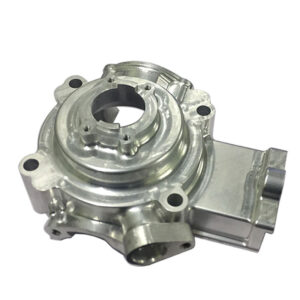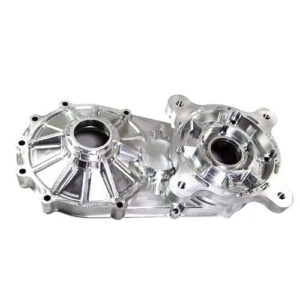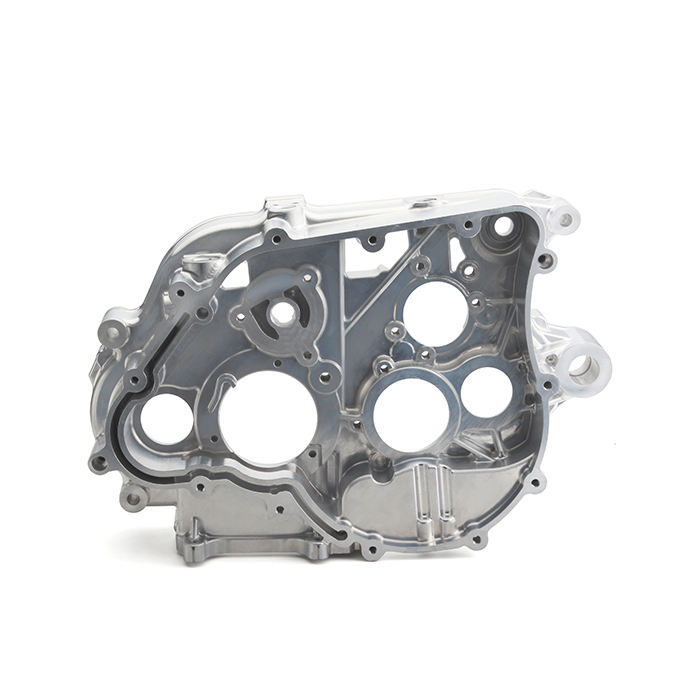Gearboxes are fundamental components in mechanical systems, enabling the efficient transmission of power and torque across a wide range of industries. From automotive transmissions to wind turbine drivetrains, gearboxes are designed to meet diverse operational demands, balancing precision, durability, and efficiency. This article explores the key characteristics and features of gearboxes, such as stable torque transmission, high precision, and compact design, and details their applications in sectors like industrial automation, renewable energy, and agriculture. Technical parameters and practical insights are provided to offer a comprehensive understanding of gearbox functionality and versatility.
Key Characteristics of Gearboxes
Gearboxes are engineered to deliver reliable performance under varying loads and conditions. Their characteristics make them indispensable in applications requiring precise motion control, high torque, or compact integration. Below are the primary characteristics that define modern gearboxes.
Stable Torque Transmission
Gearboxes excel at transmitting torque through multi-stage gear arrangements, enabling high torque output for heavy-duty applications. By reducing rotational speed while increasing torque, gearboxes ensure efficient power delivery in systems like cranes or wind turbines.
Technical Parameters: For a helical gearbox with a 10:1 reduction ratio, torque output can reach 5000 Nm at an input speed of 1500 RPM, using AISI 4140 steel gears with a surface hardness of 58–62 HRC. Gear tooth profiles are machined to ISO 5 accuracy, ensuring smooth load distribution.
Multi-stage designs, typically involving 2–4 gear stages, allow gearboxes to handle loads up to 100 kN in industrial applications, with efficiency losses minimized through optimized gear meshing.
High Precision Operation
Precision is critical in gearboxes, particularly in applications like robotics or CNC machinery, where accurate transmission ratios and minimal backlash are essential. Precision machining and quality control ensure consistent performance and reduced operational errors.
Technical Parameters: Spur gears in a precision gearbox achieve a pitch error of ±0.005 mm and a backlash of 0.01–0.02 mm, with tooth profiles ground to a surface finish of Ra 0.4–0.8 µm. CNC hobbing machines operate at cutting speeds of 60–100 m/min to maintain profile accuracy.
Backlash control is achieved through tight tolerances and, in some cases, preloaded gear designs, ensuring positional accuracy within ±0.01° in servo-driven systems.
Compact Structure
Gearboxes are designed to occupy minimal space, making them ideal for integration into space-constrained systems like automotive drivetrains or robotic arms. Compact designs are achieved through optimized gear arrangements and housing materials.
Technical Parameters: A planetary gearbox with a diameter of 100 mm can deliver 1000 Nm of torque, using a housing made of aluminum alloy (6061-T6) with a wall thickness of 5–8 mm. Gear modules range from 0.5–2, allowing high power density in a compact footprint.
Lightweight materials like aluminum reduce overall weight, while modular designs enable easy integration into existing machinery.
Low Noise and Vibration
Noise and vibration reduction is a priority in gearbox design, particularly for applications in precision machinery or consumer products. Optimized gear tooth profiles, such as helical or involute designs, and advanced lubrication systems minimize operational noise.
Technical Parameters: Helical gears with a helix angle of 15°–30° reduce noise to 60–70 dB at 1000 RPM, compared to 75–85 dB for spur gears. Lubrication systems using synthetic oils (ISO VG 220) maintain a film thickness of 1–2 µm to dampen vibrations.
Precision grinding and dynamic balancing further reduce vibration, with shaft runout controlled to ±0.01 mm.
High Efficiency
Gearboxes are designed to maximize mechanical efficiency, reducing energy losses through hardened gear surfaces and precise meshing. This is critical in energy-sensitive applications like electric vehicles or renewable energy systems.
Technical Parameters: A planetary gearbox achieves 95–98% efficiency per stage, with gears carburized to 58–62 HRC and ground to Ra 0.4 µm. Gear meshing losses are minimized by maintaining a contact ratio of 1.5–2.0.
Efficiency is further enhanced by low-friction bearings and optimized lubrication, reducing heat generation and energy consumption.
Long Service Life
Durability is a hallmark of quality gearboxes, achieved through high-strength materials, heat treatment, and wear-resistant coatings. These features ensure gearboxes withstand cyclic loading and harsh environments.
Technical Parameters: Gears made from 20MnCr5 steel, carburized to a case depth of 0.8–1.2 mm, achieve a fatigue life of 10^7 cycles under 1000 Nm load. Shafts tempered to 30–40 HRC resist bending stresses up to 800 MPa.
Regular maintenance, including oil changes every 5000 hours, extends service life, with some industrial gearboxes operating reliably for 20–30 years.

Structural and Design Features of Gearboxes
Gearboxes are characterized by their structural versatility and design flexibility, allowing them to meet diverse operational requirements. These features enable customization, ease of maintenance, and adaptability to various applications.
Multiple Structural Configurations
Gearboxes are available in various configurations, each suited to specific transmission needs:
- Helical Gearboxes: Offer smooth operation and high load capacity, with helix angles of 10°–30° and modules of 1–5.
- Bevel Gearboxes: Enable right-angle transmission, with cone angles of 20°–45° and tooth profiles machined to ISO 6 accuracy.
- Planetary Gearboxes: Provide high torque density, with 3–5 planet gears and a sun gear module of 0.5–2.
- Worm Gearboxes: Offer high reduction ratios (up to 100:1), with worm threads machined to a lead accuracy of ±0.01 mm.
Each configuration is selected based on factors like space constraints, load requirements, and transmission direction.
Versatile Transmission Modes
Gearboxes support multiple transmission modes to accommodate different system layouts:
- Parallel Shaft: Used in industrial conveyors, with shaft center distances of 50–500 mm and alignment tolerances of ±0.02 mm.
- Right-Angle Shaft: Common in automotive differentials, with bevel gears machined to a cone apex tolerance of ±0.015 mm.
- Coaxial Transmission: Found in planetary gearboxes, with concentricity tolerances of ±0.01 mm for sun and planet gears.
These modes enable gearboxes to integrate seamlessly into diverse mechanical systems.
Modular Design
Modular gearbox designs facilitate assembly, maintenance, and upgrades. Standardized components, such as gear sets or bearing assemblies, allow quick replacements and scalability.
Technical Parameters: Modular planetary gearboxes use interchangeable planet carriers with 3–5 gears, machined to a positional tolerance of ±0.02 mm. Housing bolt patterns adhere to ISO 9409 standards for robotic applications.
Modularity reduces downtime, with maintenance intervals extended by using sealed bearings and synthetic lubricants.
High Customizability
Gearboxes can be tailored to specific requirements, including gear ratios, materials, sealing systems, and lubrication methods. Customization ensures optimal performance in unique operating conditions.
Technical Parameters: Custom wind turbine gearboxes use gear ratios of 80:1–120:1, with gears made from 42CrMo4 steel and seals rated for IP65 protection. Lubrication systems deliver oil at 2–5 L/min to maintain gear temperatures below 80°C.
Custom designs often involve finite element analysis (FEA) to optimize stress distribution and material selection.

Applications of Gearboxes Across Industries
Gearboxes are ubiquitous in industries requiring reliable power transmission and motion control. Their versatility and robustness make them essential in both heavy-duty and precision applications. Below are key industries and their specific gearbox uses.
Automotive and Transportation Equipment
Gearboxes are critical in automotive systems, enabling efficient power delivery and speed control.
Applications:
- Transmissions: Manual and automatic transmissions use helical or planetary gearboxes with gear ratios of 4:1–6:1, delivering torque up to 400 Nm.
- Differentials: Bevel gearboxes with ratios of 3:1–5:1 ensure torque distribution to wheels, with gears machined to Ra 0.8 µm.
- Electric Vehicle Drivetrains: Single-speed planetary gearboxes with ratios of 8:1–12:1 deliver 200–300 Nm, using lightweight aluminum housings.
Technical Parameters: Transmission gears are carburized to 58–62 HRC, with a case depth of 0.8–1.2 mm. CNC grinding achieves tooth profile accuracy of ISO 5, ensuring efficiency above 95%.
Industrial Automation
In automation, gearboxes provide precise motion control for high-speed and high-accuracy systems.
Applications:
- CNC Machine Tools: Servo-driven gearboxes with backlash below 0.01° ensure positional accuracy of ±0.005 mm.
- Conveyor Systems: Helical gearboxes with ratios of 10:1–50:1 deliver torque up to 2000 Nm for continuous operation.
- Robotic Joints: Planetary gearboxes with ratios of 50:1–100:1 provide torque of 50–200 Nm, with housings machined to ±0.01 mm concentricity.
Technical Parameters: Gears are ground to Ra 0.4 µm, with pitch errors below ±0.005 mm. Lubrication systems use synthetic grease (NLGI 2) for low-friction operation.
Wind Energy and Renewable Energy Equipment
Wind turbine gearboxes are critical for converting low-speed rotor motion into high-speed generator output.
Applications: Main gearboxes use planetary and helical stages with ratios of 80:1–120:1, delivering torque up to 5000 kNm.
Technical Parameters: Gears are made from 42CrMo4 steel, carburized to 60 HRC, with a surface finish of Ra 0.8 µm. Bearings are preloaded to maintain alignment within ±0.02 mm, and oil cooling systems maintain temperatures below 80°C.
Metallurgy and Mining Machinery
Gearboxes in metallurgy and mining handle extreme loads and harsh environments.
Applications:
- Rolling Mills: Helical gearboxes with ratios of 5:1–20:1 deliver torque up to 10,000 Nm.
- Cranes: Planetary gearboxes with ratios of 50:1–100:1 handle loads up to 500 kN.
- Crushers: Bevel-helical gearboxes with ratios of 10:1–30:1 provide torque of 3000–6000 Nm.
Technical Parameters: Gears are induction-hardened to 55–60 HRC, with tooth profiles machined to ISO 6. Housings are made from ductile iron (ASTM A536) with bearing seats bored to ±0.015 mm.
Packaging, Printing, and Food Processing Equipment
Light industrial applications require gearboxes with precise speed and torque control.
Applications:
- Packaging Machines: Helical gearboxes with ratios of 5:1–20:1 deliver torque of 100–500 Nm.
- Printing Presses: Planetary gearboxes with ratios of 10:1–50:1 ensure speed accuracy of ±0.01%.
- Food Processing: Stainless steel gearboxes with IP65 seals operate at 50–200 Nm.
Technical Parameters: Gears are polished to Ra 0.8 µm, with backlash below 0.02 mm. Lubrication uses food-grade oils (NSF H1) for hygiene compliance.
Agricultural Machinery
Gearboxes in agriculture provide robust power transmission for demanding tasks.
Applications:
- Harvesters: Bevel gearboxes with ratios of 3:1–10:1 deliver torque up to 2000 Nm.
- Planters: Worm gearboxes with ratios of 20:1–50:1 provide torque of 100–300 Nm.
- Tractors: Planetary gearboxes with ratios of 10:1–30:1 handle loads up to 5000 Nm.
Technical Parameters: Gears are made from AISI 1045 steel, hardened to 40–45 HRC, with tooth profiles machined to ±0.02 mm. Housings use cast iron with mounting surfaces milled to Ra 1.6 µm.
Conclusion
Gearboxes are versatile and robust components that underpin the functionality of countless mechanical systems. Their characteristics—stable torque transmission, high precision, compact design, low noise, high efficiency, and durability—make them indispensable across industries like automotive, industrial automation, wind energy, and agriculture. Structural features, such as multiple configurations, versatile transmission modes, modularity, and customizability, enhance their adaptability to diverse applications. By understanding these characteristics and applications, engineers and industry professionals can select and design gearboxes that meet specific operational needs, ensuring reliability and performance in demanding environments.
Frequently Asked Questions (FAQ)
What are the main characteristics of gearboxes?
Gearboxes are characterized by stable torque transmission, high precision, compact structure, low noise and vibration, high efficiency, and long service life. These features make them suitable for diverse applications, from automotive to industrial automation.
How do gearboxes achieve low noise and vibration?
Low noise and vibration are achieved through optimized gear tooth profiles (e.g., helical gears with 15°–30° helix angles), precision machining (Ra 0.4–0.8 µm), and effective lubrication systems (e.g., synthetic oils with 1–2 µm film thickness). Dynamic balancing and tight tolerances further reduce vibration.
What industries rely heavily on gearboxes?
Key industries include automotive (transmissions, differentials), industrial automation (CNC machines, robotics), wind energy (turbine gearboxes), metallurgy/mining (rolling mills, cranes), packaging/printing/food processing, and agriculture (harvesters, tractors).
How is gearbox efficiency optimized?
Efficiency (95–98% per stage) is optimized through hardened gear surfaces (58–62 HRC), precise meshing (contact ratio of 1.5–2.0), low-friction bearings, and advanced lubrication. CNC grinding to Ra 0.4 µm minimizes frictional losses.
